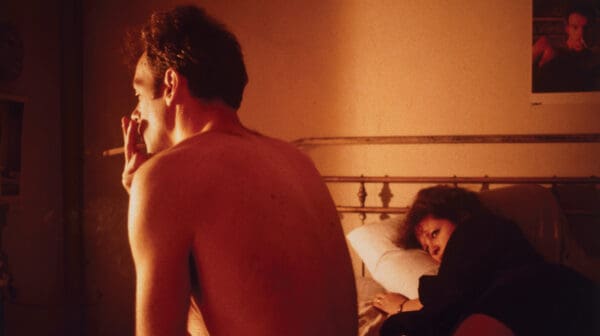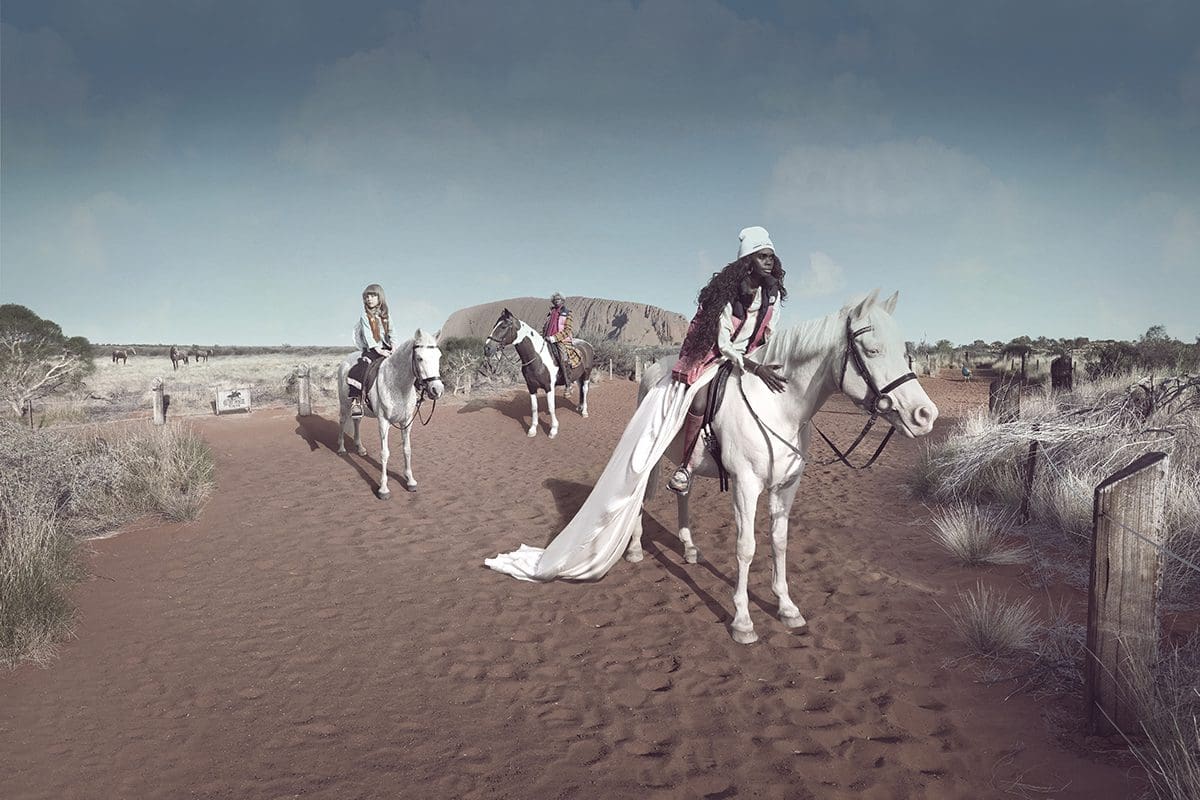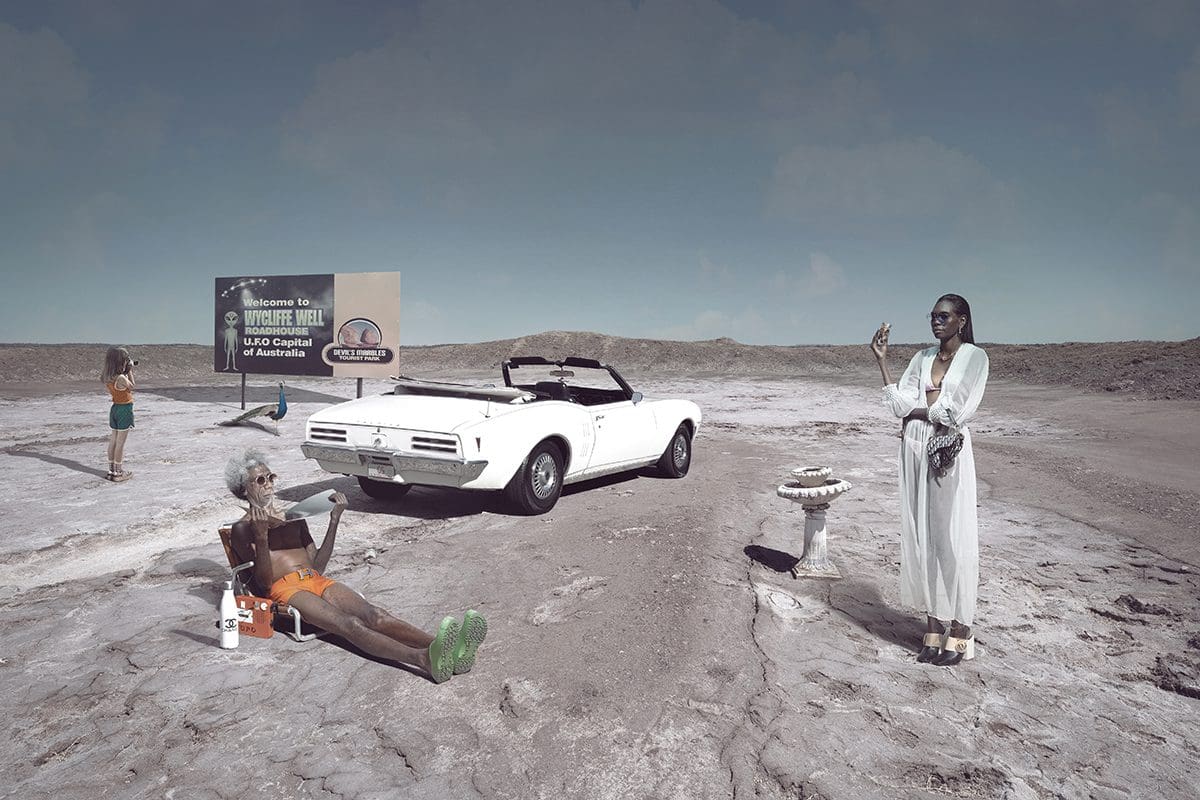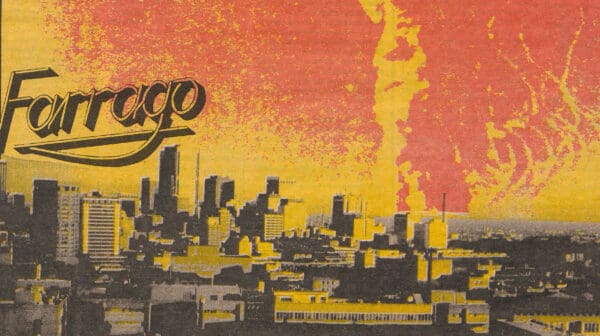Michael Cook’s photographic exploration of his heritage and family influences is a fascinating exercise in contemplating the nature of identity. As an Aboriginal child raised in an adoptive family with five older siblings, he’s had much material to contemplate, alongside investigating political ideas, consumerism, and the fabric of contemporary Australian society.
While Cook has always known he was Indigenous, he says his ability to “feel” Aboriginal has developed and evolved over his decades-long practice. His non-Indigenous adoptive mother was an activist in environmental issues and Indigenous rights, and always encouraged his learning about his heritage.
In the late 1990s, he reconnected with his biological mother and they developed a wonderful relation-ship, deepening his experience of his heritage.
Cook’s latest body of staged photographs, titled Fake, continues the trajectory of his earlier output: there is an overarching theme concerning a set of characters caught within a loose narrative. The most known of these works, Cook’s Majority Rule series, 2014, creates surreal-feeling scenes, imagining if Australia’s population were 96% Indigenous and 4% white. Fake, however, is a different kind of inversion. The story presents an Aboriginal couple and their white adopted child travelling through Australia—all of them slowly dispensing with their high fashion and consumer items as they gradually acclimatise to their environment, questioning what should be valued.
“Fake is very polished and there is a lot of fine detail in it,” says Cook. “Part of the idea with it is to look at what society expects ‘success’ to look like. I am not judging, but [rather] asking people to examine their own beliefs and whether the way they are living is what they really want, whether what we class as being successful—materialistic possessions—is all there is.”
Cook, who worked as a commercial photographer for about 20 years before he followed a persistent urge to explore fine arts, says he loves high fashion and was “the worst consumerist” when he was younger. “But at least I now understand, when I purchase something, the psychology behind why I am doing it. I grew up in a family where we questioned a lot of things. My mum used to fight for Indigenous rights, was on the council, and stopped high-rise development and so on, so I was always brought up to question and not believe in the hierarchy; to think outside the square.”
In Fake, consisting of 12 photographs, the portrayed family begins with full-blown materialism: flash cars, fancy luggage, expensive designer clothing and ridiculously priced handbags. They start at Cook’s version of an elite hotel in the outback and ride Segways, two-wheeled transporters, through the desert. By the final shot, the family members have started to discard their clothes and possessions. “They are celebrating that they have found a deeper connection back to Country, culture and themselves,” says Cook. “You could say that this reflects my journey in life, and a realisation of what is important and enduring in this world.”
Appearing in most of these images is a peacock. Cook grew up in a bird sanctuary and one of his jobs each afternoon was to feed the birds, which included a peacock and pea hens. He says the family in Fake feel privileged enough, when they check out from their hotel, to take the peacock with them. “It is with them for the rest of the trip.”
While Cook explains the child in the imagery references and mirrors his own childhood experiences, he feels that that time in his life can now be seen as part of a larger investigation of identity; how art can encourage viewers to question themselves.
When he had his first visual art shows in the early 2010s—after he was encouraged by his partner to actively explore his ideas—he was still questioning his identity and felt he didn’t have the “right” to be discussing Indigenous issues in his work. But when he was working on his Mother series (launched at Art Basel in 2016) he began to realise there were many different types of Aboriginal identity and thousands of different stories.
“My story is my story, and no one can tell me different,” he says. “I have every right to tell my story as it is, and see Australian history in my own way. I am reasonably good at creating it [history] from my own point of view, because I ask a lot of questions of myself and society in general.”
Thus emerged his Invasion series, 2017, in which terrified (Anglo) Londoners are portrayed fleeing an invasion by Aboriginal-themed flying saucers, with Indigenous fembots and laser-shooting possums.“I was trying to imagine how Aboriginal people felt when they saw Europeans for the first time,” he says.“It [Invasion] is far-fetched.” But, like Fake, it is deeply affecting in the way it uses a light veneer of humour to take us deeper into far more serious considerations about a disturbingly harsh history.
Fake
Michael Cook
Jan Murphy Gallery
28 March—22 April
This article was originally published in the March/April 2023 print edition of Art Guide Australia.












